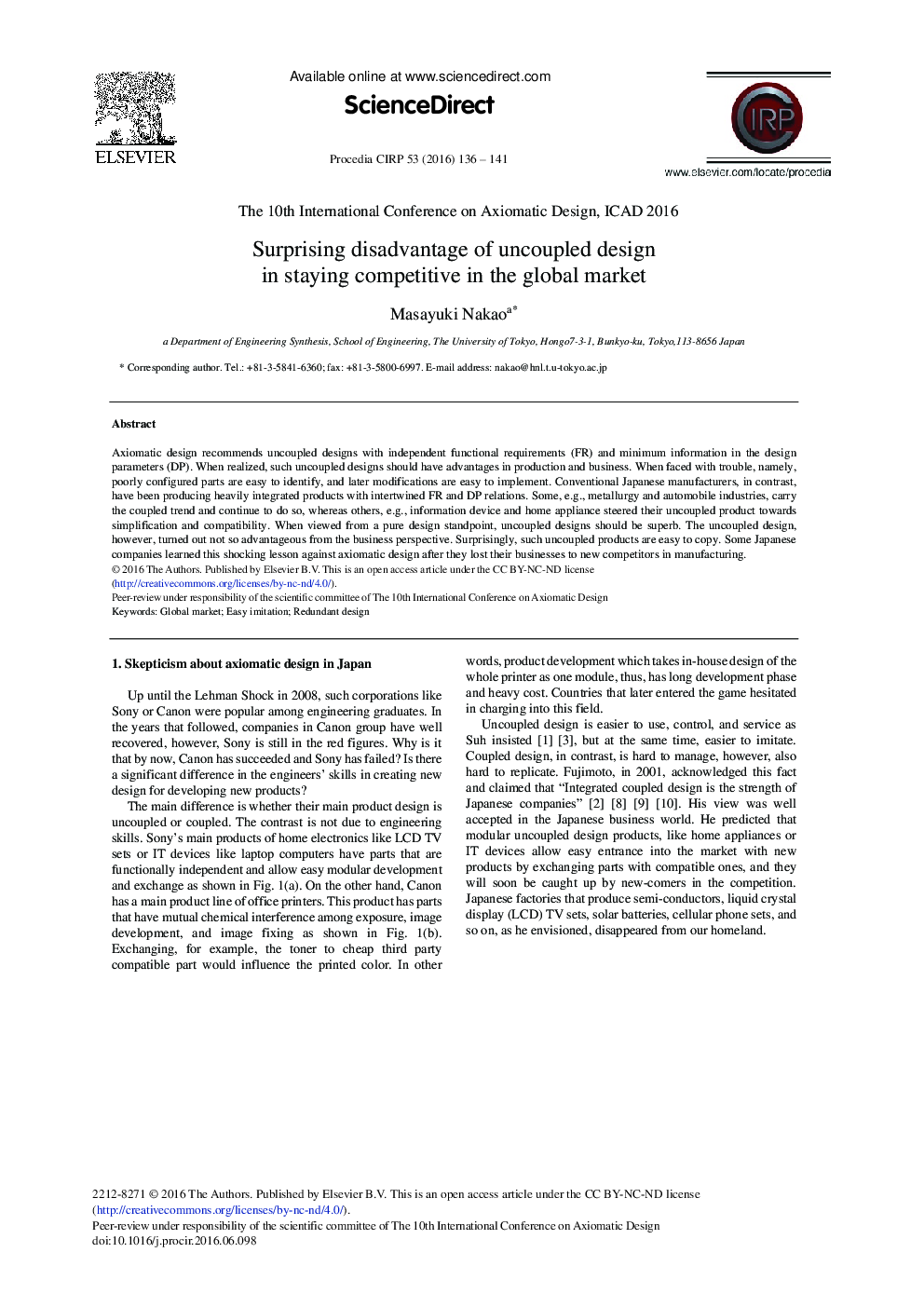| Article ID | Journal | Published Year | Pages | File Type |
|---|---|---|---|---|
| 5469907 | Procedia CIRP | 2016 | 6 Pages |
Abstract
Axiomatic design recommends uncoupled designs with independent functional requirements (FR) and minimum information in the design parameters (DP). When realized, such uncoupled designs should have advantages in production and business. When faced with trouble, namely, poorly configured parts are easy to identify, and later modifications are easy to implement. Conventional Japanese manufacturers, in contrast, have been producing heavily integrated products with intertwined FR and DP relations. Some, e.g., metallurgy and automobile industries, carry the coupled trend and continue to do so, whereas others, e.g., information device and home appliance steered their uncoupled product towards simplification and compatibility. When viewed from a pure design standpoint, uncoupled designs should be superb. The uncoupled design, however, turned out not so advantageous from the business perspective. Surprisingly, such uncoupled products are easy to copy. Some Japanese companies learned this shocking lesson against axiomatic design after they lost their businesses to new competitors in manufacturing.
Keywords
Related Topics
Physical Sciences and Engineering
Engineering
Industrial and Manufacturing Engineering
Authors
Masayuki Nakao,
